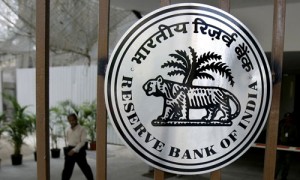By: Ravi Sinha
Track2Realty Exclusive
 Realty sector has welcomed the the RBI’s decision of slashing the CRR rates by 25 basis points to 4.50% with a guarded optimism. The statement from the Prime Minister’s Economic Advisory Council (PMEAC) that the RBI move to infuse liquidity in the system is “more potent” than a cut in interest rate and it will help banks expand credit portfolio seems to have few takers in the sector.
Realty sector has welcomed the the RBI’s decision of slashing the CRR rates by 25 basis points to 4.50% with a guarded optimism. The statement from the Prime Minister’s Economic Advisory Council (PMEAC) that the RBI move to infuse liquidity in the system is “more potent” than a cut in interest rate and it will help banks expand credit portfolio seems to have few takers in the sector.
“I said that CRR is a more potent instrument only because CRR acts on the liquidity base of the commercial banks and therefore, even if an announcement is made on the policy rates the Reserve Bank of India will have to take actions either through Open Market Operations or through other mechanisms to provide liquidity,” Dr Rangarajan said.
He said the RBI recognised certain steps taken by the government and slashed CRR though the cut is not a big reduction. The sector, however, expressed guarded optimism keeping in mind both the need of liquidity in the fund dried market and buyers’ sentiments at the same time.
“The RBI has been constantly keeping a strict watch on the inflation rate that has refused to decrease. Hence, RBI has been very conservative in spurring growth by reducing interest rates and/or increasing capital flows at the cost of increasing the inflation rate. It has been responding to macro-economic concerns through small and measured doses such as increasing the limits for ECB as witnessed recently and now by reducing the CRR rate to infuse Rs. 17,000 crores of capital into the economic system. Given the recent announcements by the Govt to allow FDI in multi-brand retail, airlines, etc. this is another positive sentiment reinforcing move which will enable domestic and international investors to see the country in a more positive light. The expected release of funds into the system should have a multiplier effect and boost various activities in the economy,” says Sanjay Dutt, Executive Managing Director, South Asia, Cushman & Wakefield.
“The 25 basis point cut in the cash reserve ratio by the RBI, will definitely aid the improving liquidity situation in the market, both for businesses and consumers. It is anticipated that this marginal cut in CRR will help release addition Rs 17,000 crores of liquidity into the system, thus ensuring better availability of credit. This change in the cash reserve ratio is a statement of direction by the apex bank, where if inflation comes down to within the acceptable limits, easing interest rates can be expected in the future,” says Sachin Sandhir, MD-RICS South Asia.
“The RBI’s decision to cut Cash reserve ratio (CRR) is a step in the right direction. This move will allow banks to disburse monies in the sagging market. I hope this also has a positive impact on the real estate sector and the developers find it easier to gain access to funds and that too at lower rates. Also, home loans might get cheaper. Thus, it could provide encouragement to the real estate sector in the country,” says Anshuman Magazine, Chairman & Managing Director – CBRE South Asia.
MCHI-CREDAI also appreciated the move by RBI on their decision of slashing the CRR rates by 25 basis points to 4.50%. “This step will infuse more liquidity into the sagging markets, benefiting the real estate sector to a great extent. Now, we expect banks to cut down the interest rates so that there is an upward trend in demand for real estate. With the festival season around the corner, the rate cut will benefit home buyers, who will be able to go ahead with their purchases in the real estate sector. So, MCHI-CREDAI believes that this is a positive step by the RBI, it will benefit all the Sectors,” said MCHI-CREDAI in a statement.
Experts believe given the fact that the mortgage or home loan interest rates have increased over the last financial year, in tandem with increasing policy rates as a counter measure of rising inflation – the marginal cut in the cash reserve ratio is indicative of expected on-going decline in home loan interest rates. However, how soon these rate cuts will take place will depend on various factors that influence RBI policy such as inflationary pressures, fiscal deficit limits etc.





